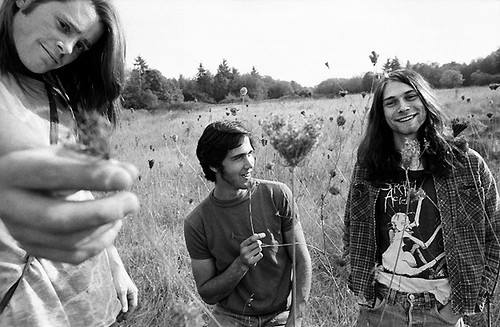 Spoiler Alert!: Some of the best and juiciest bits of the movie are revealed in this review.
Spoiler Alert!: Some of the best and juiciest bits of the movie are revealed in this review. by Courtney Hilden
With all the superhero movies made in recent years, like Batman, Spiderman and Ironman, the competition for the high-flying, mutant-spider-bitten, and spandex wearing can be tough. And yet, The Green Lantern, a lesser-known superhero, gets a decent movie.
The story picks up with Hal Jordan, a hotshot pilot, who, since he is being played by Ryan Reynolds, puts the hot in "hotshot." At work, he flies suicidally in an effort to beat drone planes, and it is a Pyrrhic victory: he beats the planes, but in the process, loses his company a government contract, and half of the employees will be fired. His ex-girlfriend, his boss, also worries about his safety, since his own father also died while flying.
Despite all this, The Green Lantern is never as dark or brooding as Batman or the later Spiderman movies. Instead, there's something wild about this character, something recklessly stupid. He shows up to his ex's in full costume, risking her discovering his identity (which takes her all of a minute to uncover.) And although he decides to save Earth solo, he does so in a way that almost destroys his life. Hal Jordan is a go-for-broke kind of character, and there's something refreshing about someone who does not brood about his decisions before or after.
 He simply does.
He simply does.The true knockout performance in this movie is not Ryan Reynolds, although he delivers and understands his character. Peter Sarsgaard's Hector Hammond is quite possibly the most Shakespearean villain ever on screen. He is constantly being criticized and passive aggressively pushed around by his father, he is in the thankless job of a university professor and he never got the girl, and at the first hint of power he decides to use it on murdering his own father. (The writers smartly decided to concentrate the story of Hector's poor relations with his father instead of his rejection at the hands of the one female character.) Hector becomes literally bloated with his new-found power, and turns into a Frankenstein's monster of his own and his father's making: he is pitiable and evil at the same time. Sarsgaard balances these perfectly, never laying it on too thick.
 And his screams of pain are heartbreakingly tortured. The singer/screamers of metal bands work years to perfect their howls, and none of those come to the ones that Sarsgaard delivers.
And his screams of pain are heartbreakingly tortured. The singer/screamers of metal bands work years to perfect their howls, and none of those come to the ones that Sarsgaard delivers.Lastly, Mark Strong as Sinestro gives a solid performance as well. Strong is better known for playing intense enemies in movies and television shows across the pond. Strong's best characters were ones with rage bubbling beneath their surfaces. Strong does a slight turn here; instead of rage, his Sinestro is fierce, but in a subtle, strangely nurturing way. If there is going to be a second movie (and honestly, I am not opposed to the idea), then let's hope we get to see more of Strong and Reynolds together, saving the world.



